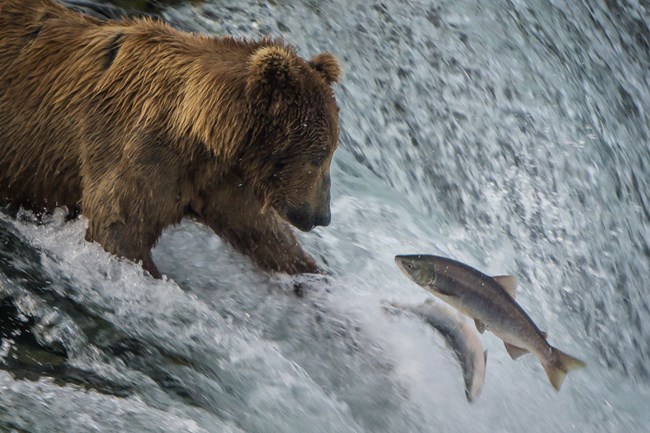
NPS Photo Mercury and toxic compounds (like pesticides) can be transported as air pollution and deposited in parks. These air pollutants have been measured in National Park Service units across the country and are known to have harmful effects on wildlife. Behavioral, neurological, and reproductive effects can occur in fish, birds, wildlife, and even humans when toxic compounds build up in the food chain.
What are toxics?Air toxics include heavy metals like mercury, as well as persistent organic pollutants like pesticides and DDT. These airborne contaminants are especially harmful because they:
Toxic air pollutants such as pesticides, PCBs, flame retardants (PBDEs), and other industrial or combustion by-products are generally manmade compounds. These can be are released into the atmosphere through energy use and manufacturing activities. Once they are in the air, toxic contaminants are often carried towards polar or high elevation environments where, in cold conditions, they deposit as solids. 
NPS Photo How do mercury and toxics affect nature?Unlike other air pollutants such as ozone and particulate matter, mercury and toxics are not usually found in high enough concentrations in the air to cause health risks from breathing in these compounds. Instead, airborne contaminants present a risk to wildlife and humans because they can build up in the food chain. Once deposited, methylmercury and toxic compounds build up in living things and increase in concentration as you move up each level of the food chain through a process called biomagnification. Often fish and fish-eating birds and wildlife are the most effected by toxic contaminants. Effects in fish, birds, and wildlife can include:
In addition, the development of both male and female reproductive organs in the same organism—an abnormality known as “intersex” has been observed in fish and linked to exposure to certain contaminants like dieldrin or DDT. 
NPS Photo What is happening in parks?National parks contained levels of mercury in some fish that exceeded health thresholds for potential impacts to fish, birds, and humans, according to a U.S. Geological Survey (USGS) and National Park Service (NPS) study (pdf, 6.6MB) published in April, 2014. The project report presents findings on mercury concentrations in more than 1,400 freshwater fish from 86 sites across 21 national parks in 10 western U.S. states, from Alaska to Arizona. The large area covered by this study helps to create a more complete understanding of mercury bioaccumulation patterns in fishes of national parks. Results suggest that while risk is low in many locations, there are significant concerns about the impact of mercury on ecological health in others. For more information, see the USGS Science Feature. How do we know?Mercury and toxics deposition and effects are monitored in many national parks. Research and monitoring efforts include measurements of mercury, pesticides, and other toxic compounds in insects, amphibians, fish, birds, water, sediment, snow, air, vegetation, and wildlife. The Dragonfly Mercury Project is a citizen science study that has done sampling in more than 90 parks across the country. Research in Parks |
Last updated: October 23, 2024
